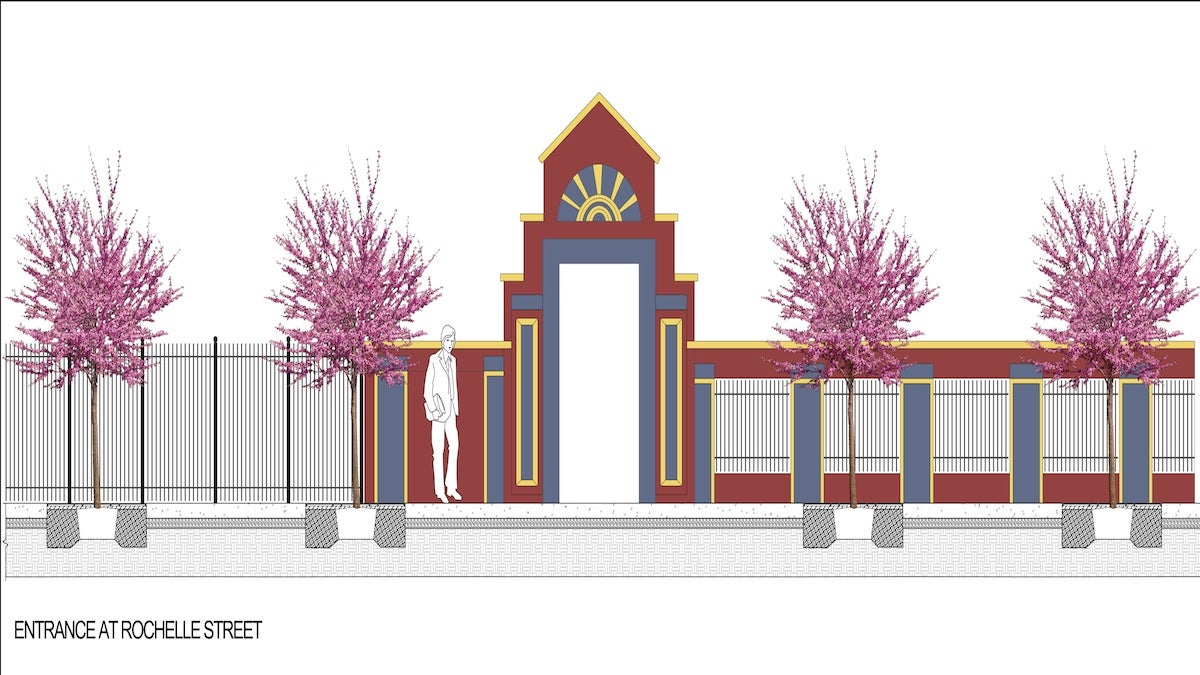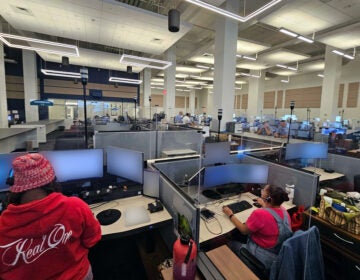Improvements at Wissahickon Station get underway

A look at the proposed design for the Wissahickon Station. (Courtesy of SEPTA)
For over two decades, Chip Roller and members of the Wissahickon Interested Citizens Association have shuddered while driving past the Wissahickon Station on Ridge Avenue.
“We recognized that our gateway looked like hell,” said Roller, vice president of WICA. Frustrated with a small and rotting roof, dim lights, and a cluttered parking lot that overwhelms the property, the neighborhood group has petitioned SEPTA, senators and congressmen to improve the aesthetics and functionality of the station. They scored a victory earlier this month, when SEPTA began a renovation project budgeted at over $300,000.
Roller says the updates will turn the location into a service point that “emphasizes people first and cars second.”
Parking will be moved further back on the lot, and trees and plants will attract visitors along the entrances to the station. Engineers will add a second entry off of Rochelle Avenue. SEPTA will repaint the station, install new lights, signs, steps and bike racks, and also repair and extend the roof to secure more shelter for commuters. SEPTA will also lay support cables and install parking payment kiosks.
While SEPTA has patched up the station in the past, WICA did not anticipate a renovation of this magnitude.
“They called me this spring out of the clear blue sky,” said Chip Roller. “They knew who we were and what we wanted to do.”
At a meeting in February, Ed Wallace, deputy director of station operations and customer service in SEPTA’s engineering department, told the association that SEPTA agreed to cover most improvement requests.
Deputy General Manager Jeffrey Kneuppel said the Wissahickon project is moving forward in spite of SEPTA’s “limited capital funding.”
According to him, SEPTA operates on a budget one-third the size of other transit systems. A lack of transportation funding at the state level has left SEPTA “really in a crisis,” said Kneuppel.
“We have over 150 stations,” he continued. “We wish we could do more.”
SEPTA has a backlog of approximately 5 billion dollars of need and renovation requests.
The Wissahickon project is possible because of an “in-house construction program” funded by SEPTA’s operating budget. This in-house team monitors infrastructure issues such as repairs. “Safety comes first,” said Kneuppel, a 26-year veteran of the system.
“We work very hard on our track and signal systems. We want our passengers to have a safe trip. If we don’t keep the stations up, we end up with claims.”
Kneuppel points to groups like WICA as instrumental in strengthening SEPTA’s community contributions.
“When we’re able to create attractive station conditions and solid performance on a line, and the community really partners with us and really understands and sells, there’s a great issue with transportation.”
WICA and SEPTA expect Wissahickon station improvements to finish next spring.
WHYY is your source for fact-based, in-depth journalism and information. As a nonprofit organization, we rely on financial support from readers like you. Please give today.




